

|
Soundclip:
|
|
| See Steve's Hand-Written Lead
Sheet |
|
|
Steve
Khan's
lead
sheet: 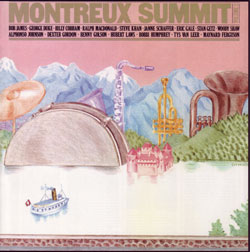 Yes, you guessed it, a little known solo artist named, Steve Khan. John McLaughlin did not want to be involved. Al Di Meola did not want to be involved. So, the guitarists selected to appear were Eric Gale, Janne Schaffer(from Sweden), and me! Honestly, I don't really remember exactly how I felt about all this, but I knew that, from a political perspective, it was important for me to participate, and to do something for the record label. And hopefully, in some as yet unseen way, that gesture, on my part, would come back in a positive way to help my recording, or to prolong my career at the label. Looking back, who is to say that it didn't do both of those things? Yes, you guessed it, a little known solo artist named, Steve Khan. John McLaughlin did not want to be involved. Al Di Meola did not want to be involved. So, the guitarists selected to appear were Eric Gale, Janne Schaffer(from Sweden), and me! Honestly, I don't really remember exactly how I felt about all this, but I knew that, from a political perspective, it was important for me to participate, and to do something for the record label. And hopefully, in some as yet unseen way, that gesture, on my part, would come back in a positive way to help my recording, or to prolong my career at the label. Looking back, who is to say that it didn't do both of those things?Because all of the top brass at Columbia Records were involved in this immense undertaking, all the artists were treated in a first-class manner. We assembled in Montreux, Switzerland in late July, 1977 to spend a couple of days rehearsing, and trying to best put together an evening of good music for an enthusiastic audience. The actual concert was to take place on the night of July 24th. So, if you can imagine 16 artists, in various states of Jazz stardom, plus all their managers, fighting for tunes, more time, more solo space, it is small wonder that the jokes were flying around at the rehearsals that this was "JAZZ: STAR WARS"!!! But, generally speaking, I think that there was a great spirit of cooperation amongst the musicians to try to make it all happen. But, when you're assembling a 4+ hour concert, you have to divide-up your forces so that you don't burn-out some of the rhythm section players, especially drummer Billy Cobham. Lucky for everyone, a very young drummer named, Peter Erskine was there as part of the Maynard Ferguson Big Band, and Pete would spell Billy and give him some relief here and there during the concert. Speaking honestly, one of the most musical and wonderful moments during the program was when Stan Getz performed Wayne Shorter's beautiful "Infant Eyes" with a trio that included: Bob James(Acoustic Piano), Gordon Johnson(Acoustic Bass), and Peter Erskine(Drums). Looking back, I feel most fortunate that I was given a spot within the evening performance for a piece of my own. I'm not certain as to just why I chose to play "Rites of Darkness" which I had first recorded with Steve Marcus' Count's Rock Band in 1976 on the album "SOMETIME OTHER THAN NOW." The actual title of the tune was "The Rites of Darkness" but, I don't remember how it got shortened when presented on "MONTREUX SUMMIT(Vol. 2)." Perhaps, of all my available compositions, I felt that this tune was the least complex? Anyway, as the rehearsal days and time got eaten-up by the Big Band tunes, I don't even remember how I was given any time at all to rehearse my tune with the group that was to perform it. A group that included: George Duke(Fender Rhodes); Bob James(Oberheim Synth); Alphonso Johnson(Elec. Bass); Billy Cobham(Drums); and Ralph MacDonald(Percussion). At that time, I had never actually played with George or Alphonso, though I was, of course, very familiar with their work. Generally speaking, I'm a very shy person, and not particularly aggressive at all about fighting for myself, or my tune, or for more rehearsal time. In truth, looking back, I'd be amazed if we rehearsed for more than a 1/2-hour, and given the results of the performance, I think that we could have used a bit more time to solidify the sequence of musical events, the transitions in the composition. Though I probably would have bristled at such comparisons or criticisms, "Rites of Darkness" was really highly influenced by the compositions of Chick Corea from the early '70s, and the pieces that he wrote for the first incarnation of Return to Forever which featured: Joe Farrell; Stanley Clarke; and Airto & Flora. Specifically, looking back, I hear strains from such tunes as: "Return to Forever" which appeared on the album "RETURN TO FOREVER"(ECM) from 1972, and it also appears on Airto's album "FREE"(CTI) from 1972; "Time's Lie" which appears on Joe Farrell's album, "MOON GERMS"(CTI) from 1972; 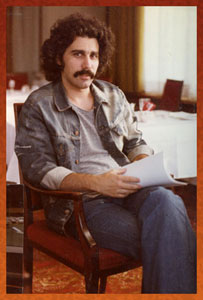 and "Bleeding Orchid" from another Joe Farrell album, "OUTBACK"(CTI) from 1971. As you listen to "Rites of Darkness" unfolding, the comparisons should become obvious. The bass line ostinato in 3/4, the first statement of the theme by the Rhodes alone, and then joined on the repeat, in this case, by the guitar. and "Bleeding Orchid" from another Joe Farrell album, "OUTBACK"(CTI) from 1971. As you listen to "Rites of Darkness" unfolding, the comparisons should become obvious. The bass line ostinato in 3/4, the first statement of the theme by the Rhodes alone, and then joined on the repeat, in this case, by the guitar.I vividly remember that, at the rehearsal, I had a quiet talk with Alphonso, and asked him to please tune down his low E-string to Eb so that the lowest note of the ostinato would always be present. Since I first wrote this tune, each bass player who performed would do that. I certainly remember Will Lee doing it each time with Steve Marcus. And, of course, this was years before the advent of the 5-string and 6-string electric basses, where playing such lower register notes is the norm, and not the exception! Anyone who has ever performed at one of the great Jazz Festivals around the world knows that getting on and off of the stage can become a circus, a tragi-comedy of epic proportions at times. My experience at Montreux 1977 was just like that. We had to frantically assemble on stage, plug-in, and basically hit it without ever double-checking the small details. And, as you can hear on the soundclip, Alphonso never tuned his lowest string down to Eb. So, before we even began, to me, a crucial element of the piece was already going to be missing. I know that inside, I was dying!!! As you'll also hear, dear George Duke missed the very first note of the melody. However, considering the circumstances, and that he was reading off of a small lead sheet(8-1/2" x 11"), not full-size music paper, small wonder that it might have been hard to see. By design, the [I] section really should have been given much more time and space to unfold, and to set the mood for the [A] melody to come. But perhaps the absence of Alphonso's low Eb caused things to just move ahead more quickly than I would have wanted? As an under-rehearsed group, we moved through [A] and [A2] without any real problems. As I now listened to the performance, the way we were stating these two sections really might have been the best aspect of it all. Billy Cobham did a fantastic job of maintaining a driving pulse without overstating it, Ralph MacDonald was adding nice colors, and the muted or muffled guitar chords that entered at bar 13 of [A] sound really good to me. However, as my melody sound enters at the repeat of [A] and [A2], this is really a disaster for me. My intonation was not good, and my stating of the melody offers way too many ornaments for my taste. But, that's just the beginning of my critique of my own performance from 35 years ago! As we take the 2nd Ending, and arrive at the [B] section, where the Samba feel begins, the first real musical train wreck occurs. Who knows what really happened, what misunderstanding might have occurred, but as we hit that section, instead of playing the expected Abmaj7(6/9) sonority, George Duke played Em7(9)/Ab. Obviously there is a huge difference, and that was not supposed to occur until letter [C] and the beginning of George's Rhodes solo. But, back to the [B] section, as we arrived at [B2], where the single-note melody is reprised, George was supposed to play that with me, but he is now comping within the sounds of Ebm7(9)/Ab under a melody that is clearly in Ab major. So, this is certainly a cringe-worthy moment too! Finally, at bar 9 of [B2], George pulls it back together, and we hit George's Rhodes solo at [C] with all guns blazing! I would certainly say that George's solo is the most musical moment in the entire piece. The groove is percolating, and Billy is playing fantastically interactive and musical drums, Ralph's congas are a great addition, and Bob James is improvising Oberheim synth stabs as we move along. I can't really complain much about this part of the performance. However, I can certainly critique aspects of this composition as it existed then. During the early days of the Fusion Era, it seemed that many of the compositions that were played, no matter how much interesting melodic material had preceded the solos, once a solo section arrived, it felt as though all the melodic material that had appeared before had just become an excuse to solo over ONE CHORD!!! 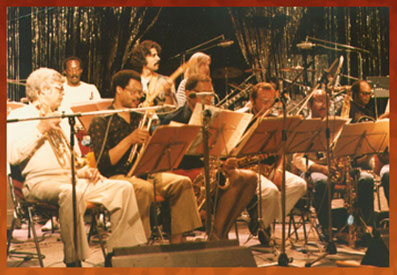 When I view "Rites of Darkness" now, that would be my most stern criticism. And, if I was going to record the piece again, I would not perform it exactly in this manner. Though it's just a small addition, on Pg. 2, System 4 of the lead sheet, you will see that I've added a couple of Clare Fischer-esque stabs to provide a kind of "rocket launch" for the soloist. At the tail-end of George Duke's solo, he briefly shifted to his mini-Moog, but that episode disappears as quickly as it had arrived. I don't know why he chose not to continue. But, just as that moment seems to fade away, train wreck #2 arrives. Yikes!!! As we hit [C], we were supposed to still be in the Samba groove. But everyone apparently got confused and shifted to the even-8th-note feel of [D] way too early. In fact, we never did actually play [C3]. If you listen to the full performance, you can hear that I am, with all due subtlety, trying to guide Alphonso to the right bass tumbao. The biggest help is when George begin to play the keyboard part from [D2]. At that moment, things begin to settle down just the slightest bit. I would imagine that, at that moment, my insides were churning, and I must have felt really embarrassed that the only performance that this tune would get was turning out to be a bit of a disaster! In contrast to the harmonic center for George's keyboard solo, the guitar solo centers around the Abmaj7 sonority. When I view "Rites of Darkness" now, that would be my most stern criticism. And, if I was going to record the piece again, I would not perform it exactly in this manner. Though it's just a small addition, on Pg. 2, System 4 of the lead sheet, you will see that I've added a couple of Clare Fischer-esque stabs to provide a kind of "rocket launch" for the soloist. At the tail-end of George Duke's solo, he briefly shifted to his mini-Moog, but that episode disappears as quickly as it had arrived. I don't know why he chose not to continue. But, just as that moment seems to fade away, train wreck #2 arrives. Yikes!!! As we hit [C], we were supposed to still be in the Samba groove. But everyone apparently got confused and shifted to the even-8th-note feel of [D] way too early. In fact, we never did actually play [C3]. If you listen to the full performance, you can hear that I am, with all due subtlety, trying to guide Alphonso to the right bass tumbao. The biggest help is when George begin to play the keyboard part from [D2]. At that moment, things begin to settle down just the slightest bit. I would imagine that, at that moment, my insides were churning, and I must have felt really embarrassed that the only performance that this tune would get was turning out to be a bit of a disaster! In contrast to the harmonic center for George's keyboard solo, the guitar solo centers around the Abmaj7 sonority.The beginning of the solo applies the usage of the C minor pentatonic[C(3rd), Eb(5th), F(6th), G(maj7th), Bb(9th)] which, of course, gives you all the nice color tones short of the #4(D-natural). From there, I suppose I was just trying to develop something that is building intensity via playing faster and louder. Of course, when you are a prisoner of your own bad sound, bad phrasing, and bad time, there's not much that's going to save you! It's pretty much impossible for me to listen this part of the performance. Of course, in the spirit of "making music" with what I was doing, everyone seemed to want to go along with the double-time passages, which made it a bit hard to come down, and get out of the solo and gracefully state [D3] correctly and effectively. As a matter of fact, I became the author of train wreck #3. While improvising a phrase in bars 3-4 of [D3] I missed playing my own melodic material at bar 5. Thank goodness George Duke was reading the music, and played it correctly. Finally, we return to restate the melodies of both [A] and [A2] and once again, all positive and well-intentioned energy on my part is negated by the fact that I absolutely butchered my own melodies. 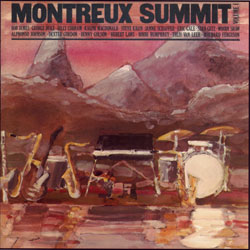 What is beautiful about those melodies, if played well and with good taste and sensitivity, is that they will actually sound nice. But, I just destroyed them. Again, it's truly humiliating and embarrassing to hear that now. What is beautiful about those melodies, if played well and with good taste and sensitivity, is that they will actually sound nice. But, I just destroyed them. Again, it's truly humiliating and embarrassing to hear that now.So, what have we learned from this presentation of a performance that had about as many disastrous results as positive ones? Well, I suppose that I never would have offered this presentation at all if I didn't believe that there was still some value to the composition, the tune. When you remove the performance, what you hear from what is written on the lead sheets might well make a lot of musical sense if performed by your own ensemble! In other words, I do feel positive about the tune, and if I chose to record it again, I would certainly make some adjustments and changes to certain aspects of the format. One of the nice things that began to happen, but disappeared as quickly as it had arrived, was that as we hit the "Fade"(at around 8:30 on the full version) which, on the old lead sheet, involved looping bars 9-16 of [A2], Billy Cobham began to improvise as the rest of us repeated the melodic material, and desperately searched for an ending. Billy's instincts were very musical, and if I had been more mature as a player or a bandleader, I would have allowed this to continue and to have grown into a full-blown solo spot for him. Should I re-interpret this piece, in some percussive form, that would probably happen because, upon listening, it just feels right. For this newly revised lead sheet, I have put together a Letter [E], which you would arrive at after the reprise of the melody by taking the [Coda] at the bottom of Pg. 1. As I just stated in the prior paragraph, those 8 bars could be repeated for a drum solo, or a percussion solo. Then, on a cue, you would take the 2nd Ending. This brings you to you a newly composed [TAG] ending that incorporates some elements from the [A] melody section which have been slightly revised and re-harmonized. For the moment, it becomes a serviceable ending. Should you decide to try to play and perform this tune yourself, you could certainly come-up with a different ending. That would be fine by me!!! I also feel that, if the recording had just sounded better, received the benefit of a better mix, at least relative to the guitar sounds, this tune might not have been so awful, at least to these ears. Sometimes, on a recording where no one particular artist is in charge, not even of his/her tune(s), the final mix ends-up being controlled by others. Yes, certainly, very musical and experienced people, on all levels. But, not necessarily attuned to the same sounds as you would be yourself. Sometimes, it is the instinct of producers and engineers, that the instrument of the featured artist should just be louder, but that isn't always the best thing for the music. Where guitar sounds are concerned, especially overdrive sounds, a microphone is usually placed very close to the speaker cabinet(s), often times, the old reliable is a Shure SM-57, a very directional mic, and a relatively bright one at that. So, the question becomes, in presenting the music as a whole, is what the mic hears at that short distance the reality of what you want to present to the listener? Or, just for example, does the musician or artist hope that the sound is closer to what someone hears, or perceives from the 20th row in the concert hall? To me, I would never want someone to hear what the actual sound is like if one held their ear 6" to 12" from the speakers! That's not it at all to me. This is where the choice of reverb(s) and processing come into play, and for that to work out, you really have to be there, at the mix, yourself. But sometimes, for varying reasons, that just isn't possible, and the results can be like this recording. The last aspect is that, if one finds himself or herself in a situation like this, where you're thrown into the middle of a Festival production, a circus, or anything resembling that, you have to fight for yourself, for your tune(if you only get one), and make certain that you are given sufficient rehearsal time. Without that, you are doomed to fail most times. For the most part, I don't blame anyone else but myself for not being more aggressive, and making certain that the details of the tune, and especially all the complex rhythmic transitions were clearly understood by all the significant players. But, I was shy about that, and we all paid for it later. In closing, as we always do at this time of the year, Blaine and I would like to wish everyone all the joys of the Holiday Season, a very MERRY CHRISTMAS and a HAPPY NEW YEAR!!! Y por supuesto, les deseamos un muy ¡FELIZ NAVIDAD y FELIZ AÑO NUEVO! Wishing you all good health, happiness, and, as it always seems necessary to state, may this crazy planet of ours somehow finally find its way to PEACE on earth during the coming year of 2013!!! Addendum: Believe it or not, I actually went to Amazon.com, and purchased both volumes of "MONTREUX SUMMIT"(Wounded Bird) 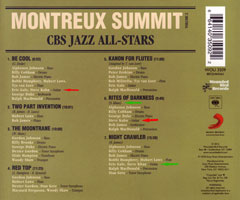 as I knew that no one at Sony Music was going to send all the artists complimentary promo CDs. When the package arrived, I opened it up, and took a look at the TRAY CARDS for both CDs. What I then saw was truly horrifying, and very disappointing! as I knew that no one at Sony Music was going to send all the artists complimentary promo CDs. When the package arrived, I opened it up, and took a look at the TRAY CARDS for both CDs. What I then saw was truly horrifying, and very disappointing!For those of you who might not be familiar with this term, what you might refer to as the "back" of the CD jewel case, the piece of paper that slides into the back of the casing with the basic information about the recording, this is the "tray card." If you were to view the TRAY CARD for Volume 2 of "MONTREUX SUMMIT" you would see that my last name was spelled K-A-H-N in two places. Needless to say, I was furious! After 35 years, this recording finally comes out on CD, and they can't correctly spell one of the artist's names!!! And, by the way, on the tray card for Volume 1, my last name was misspelled 4 more times!!! You should know that on both volumes of these albums when originally released as LPs, my last name was spelled correctly in every significant place! HOW does something like this, spelling errors on a subsequent CD release, happen? Though it might seem unrelated, please allow me to loosely recount a conversation that I had with my father just after I had moved to New York, somewhere during 1970! It went something like this:
Needless to say, I was not really grasping the very cynical point-of-view that he was trying to share with me, because I was just too young and too immature. But, the fact that, generally speaking, workmen did not care enough to truly make the corners of the ceiling square represented something far greater than that. And, if you look at the descent of how American workmanship, craftsmanship has come be viewed by the global marketplace in the last 40 years, then you really see the point my father was trying to make me see. So, if one simply takes that example, and applies it to the person or persons who were charged with faithfully assembling the credits for the "MONTREUX SUMMIT" CDs, and then proof-reading them with greater care, those very same people obviously did not take nearly enough pride in doing great work to have done it correctly the first time. How often does something like this happen in the recording industry? Sadly, ALL THE TIME!!! This is why I try to do all these things myself, at least where my own productions are concerned, because when the credits get in the hands of someone else? Often times, errors can occur, and you have to be vigilant about every detail, large and small. The gravity of such an error is the fact that, in days gone by, after an error like this had occurred, you would be told, "Don't worry, we'll fix it on the next run/printing!" Of course, the problem with that is that, where Jazz LPs or CDs were concerned, they almost NEVER make it to a 2nd printing! So, if we were to say that, in this case, perhaps Sony/Columbia have pressed about 500 CDs of each volume, and once those 1,000 CDs have been sold, there will most likely NEVER be another pressing. So, all the fans, old and new, who see those flawed tray cards will come to know me as Steve Kahn, and I'll be stuck with that! And after a long career, that really stinks! Even though, in all honesty, this is hardly a performance or recording that I would want to shout to the world about!!! Post Script: On the morning of November 27th, 2012, I received quite a surprise via e-mail, as Terry Wachsmuth of Wounded Bird Records wrote to tell me that he believed that there would, in fact, be a 2nd printing of the "MONTREUX SUMMIT" CDs, and, attached revised pdfs for both tray cards with all the corrections made where my last name appears. At least, in this case, some effort was made. We rarely, if ever, see that. So now, we'll just wait and see if the corrected CDs ever see the light of day!!! My thanks to Terry for following through on this!
[Photos: Steve seated and lost in deep thought at the Montreux Palace Hotel Ballroom
On stage: [Seated L-R] Maynard Ferguson; Woody Shaw; Dexter Gordon; Stan Getz; Benny Golson; Eric Gale [Standing L-R] Ralph MacDonald; Steve; Janne Schaffer; Billy Cobham(seated, but obscured) Photos Courtesy of: The Peter Erskine Archives & Gordon Johnson] | |